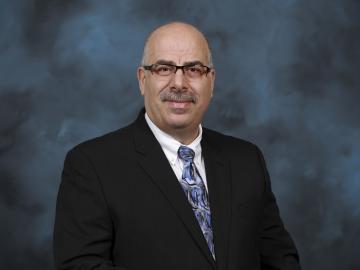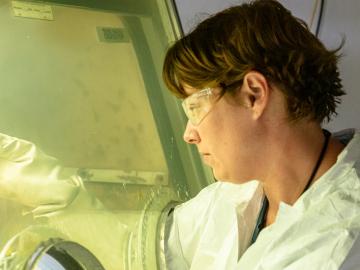Filter News
Area of Research
- (-) Isotopes (12)
- (-) Materials (15)
- (-) Materials for Computing (18)
- (-) National Security (7)
- Advanced Manufacturing (7)
- Biology and Environment (37)
- Building Technologies (1)
- Clean Energy (69)
- Computational Biology (1)
- Computational Engineering (2)
- Computer Science (4)
- Electricity and Smart Grid (1)
- Fusion and Fission (14)
- Fusion Energy (1)
- Mathematics (1)
- Neutron Science (16)
- Nuclear Science and Technology (1)
- Quantum information Science (3)
- Sensors and Controls (1)
- Supercomputing (21)
- Transportation Systems (1)
News Topics
- 3-D Printing/Advanced Manufacturing (4)
- Artificial Intelligence (2)
- Bioenergy (1)
- Biology (1)
- Biomedical (2)
- Chemical Sciences (6)
- Climate Change (1)
- Composites (2)
- Computer Science (7)
- Coronavirus (2)
- Critical Materials (1)
- Cybersecurity (4)
- Energy Storage (2)
- Environment (1)
- Frontier (1)
- Fusion (1)
- Isotopes (11)
- ITER (1)
- Materials (13)
- Materials Science (14)
- Microscopy (8)
- Nanotechnology (10)
- National Security (6)
- Neutron Science (7)
- Physics (1)
- Polymers (5)
- Quantum Computing (2)
- Quantum Science (5)
- Security (1)
- Space Exploration (2)
- Sustainable Energy (2)
- Transportation (2)
Media Contacts

Moe Khaleel has been selected to lead the National Sciences Security Directorate, or NSSD, at the Department of Energy’s Oak Ridge National Laboratory.

A world-leading researcher in solid electrolytes and sophisticated electron microscopy methods received Oak Ridge National Laboratory’s top science honor today for her work in developing new materials for batteries. The announcement was made during a livestreamed Director’s Awards event hosted by ORNL Director Thomas Zacharia.

It’s elemental — scientists agree that the periodic table is incomplete. And when it comes to unveiling parts of the periodic table yet undiscovered, ORNL is doing some heavy lifting.

A discovery by Oak Ridge National Laboratory researchers may aid the design of materials that better manage heat.

A new technology for rare-earth elements chemical separation has been licensed to Marshallton Research Laboratories, a North Carolina-based manufacturer of organic chemicals for a range of industries.

Using novel data sets and computing systems, researchers at ORNL are simulating how climate change affects the safety and security of the country.

In experiment after experiment, the synthetic radioisotope actinium-225 has shown promise for targeting and attacking certain types of cancer cells.

Ten scientists from the Department of Energy’s Oak Ridge National Laboratory are among the world’s most highly cited researchers, according to a bibliometric analysis conducted by the scientific publication analytics firm Clarivate.

A team of collaborators from ORNL, Google Inc., Snowflake Inc. and Ververica GmbH has tested a computing concept that could help speed up real-time processing of data that stream on mobile and other electronic devices.

Researchers at ORNL designed a novel polymer to bind and strengthen silica sand for binder jet additive manufacturing, a 3D-printing method used by industries for prototyping and part production.




